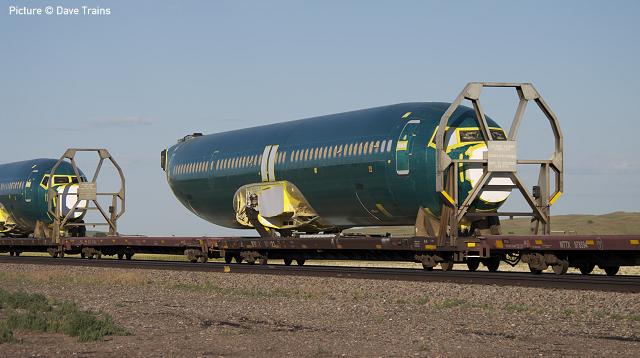by F-line to Dudley via Park
Not a particularly good comparison. Delta didn't have to pre-fabricate parts to keep 757's that have been out-of-production for 13 years in full state-of-repair with viable upgrade paths intact for future overhauls yet-to-come. Everything they fly still has vendor service-and-support and a robust maintenance supply chain that's guaranteed for a couple more decades. It costs AMTK a fortune to do that on the defunct Budd design for the Amfleets. Livery updates for customer service bona fides?...sure, that's easy, because it doesn't touch any car innards which are still wearing away underneath. Another 20-year life-extension midlife overhaul? They long ago crunched the numbers on that, and the results were brutal for what supply chains have to be replaced in-total to modernize those cars for the long-haul at any rational dollars-and-sense.
The more correct analogy would be "Why not keep flying 727's?", which were last produced in 1984...did go through multiple modernization overhauls straight through the end of the 20th century to keep up with the times...and could've kept going on the rebuild circuit except that the supply chain eventually ran out and any future modernizations could only be done in-house without vendor support. They got dropped en masse from airline rosters in the late-90's/early-00's once that reality set in. Right now the largest non-cargo operator of 727's in the world is the Mexican Air Force, who have just 5 of them in-service. Delta retired the last of their 727 fleet in 2004, when Anderson was Northwest's CEO in the middle of their merger transition into Delta (the merger also being the official end of Northwest's 727 fleet, which wasn't re-badged for Delta). He's got firsthand experience with exactly these kinds of fleet sustainability decisions.
The livery refresh was going to happen in some form or another because the practical fastest timetable for Amfleet replacements is a wee too far for milking the current decaying livery another 7-10 years without customer backlash. I doubt anything Anderson brought to the table substantially informed that decision, other than maybe stating preference to pay up-front for a preemptive 'package' update instead of doing reactive band-aiding (i.e. pretty much a marketing decision rather than a fleet management-driven decision). They already knew they had to do something, and had their final choices narrowed down to Door #1, Door #2, Door #3 long before he got hired. But that's not the same as pursuing a strategy to lean more on old stuff that's tarted up to look new...because there's no decision to make there. If they issued the Amfleet-replacement RFP tomorrow and knew in advance that it was going to be a PRIAA-fied Siemens Brightline, it'll still be 2025 before the last Amfleet I gets punted to reserve service, because it simply takes that long to produce, test, and accept 600 cars while pushing all the up-front paper. The current livery wasn't going to last until '25 without becoming reaaaallly dodgy, so the cosmetic refresh program was always a fait accompli.
The more correct analogy would be "Why not keep flying 727's?", which were last produced in 1984...did go through multiple modernization overhauls straight through the end of the 20th century to keep up with the times...and could've kept going on the rebuild circuit except that the supply chain eventually ran out and any future modernizations could only be done in-house without vendor support. They got dropped en masse from airline rosters in the late-90's/early-00's once that reality set in. Right now the largest non-cargo operator of 727's in the world is the Mexican Air Force, who have just 5 of them in-service. Delta retired the last of their 727 fleet in 2004, when Anderson was Northwest's CEO in the middle of their merger transition into Delta (the merger also being the official end of Northwest's 727 fleet, which wasn't re-badged for Delta). He's got firsthand experience with exactly these kinds of fleet sustainability decisions.
The livery refresh was going to happen in some form or another because the practical fastest timetable for Amfleet replacements is a wee too far for milking the current decaying livery another 7-10 years without customer backlash. I doubt anything Anderson brought to the table substantially informed that decision, other than maybe stating preference to pay up-front for a preemptive 'package' update instead of doing reactive band-aiding (i.e. pretty much a marketing decision rather than a fleet management-driven decision). They already knew they had to do something, and had their final choices narrowed down to Door #1, Door #2, Door #3 long before he got hired. But that's not the same as pursuing a strategy to lean more on old stuff that's tarted up to look new...because there's no decision to make there. If they issued the Amfleet-replacement RFP tomorrow and knew in advance that it was going to be a PRIAA-fied Siemens Brightline, it'll still be 2025 before the last Amfleet I gets punted to reserve service, because it simply takes that long to produce, test, and accept 600 cars while pushing all the up-front paper. The current livery wasn't going to last until '25 without becoming reaaaallly dodgy, so the cosmetic refresh program was always a fait accompli.
